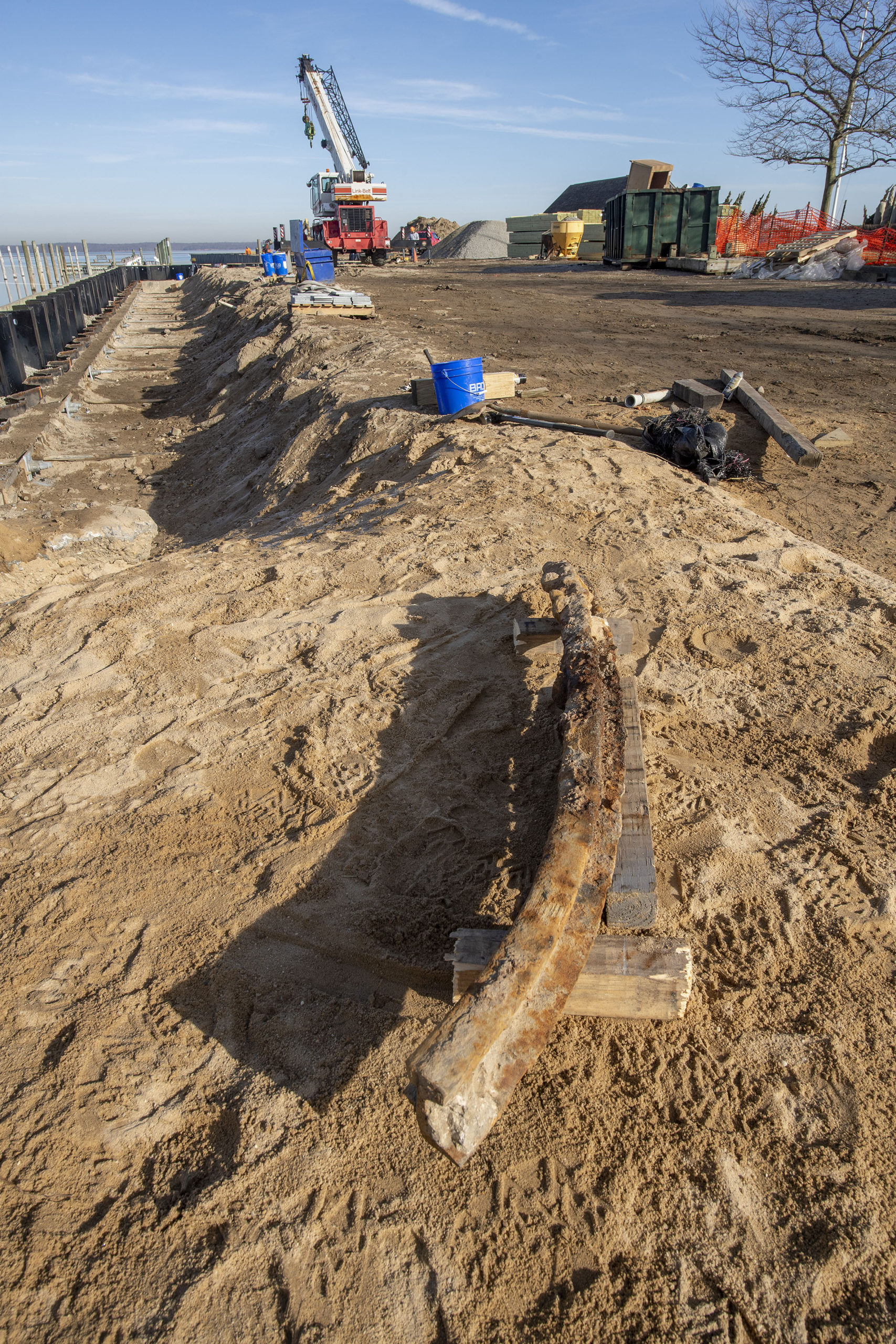
“It is said Mark Edwards’ mother sent her son on a whaling voyage and Mark didn’t want to go at all. His mother was the end of Long Wharf when the ship weighed anchor and said: ‘Goodbye Mark.’ The latter, waving back, hollered ‘Goodbye, mother, blankety blank.’”
— The Sag Harbor Express, November 22, 1945.
For photographer Michael Heller, you could say the intrigue began where the railroad tracks ended. That’s where his interest in uncovering the history of Long Wharf, Sag Harbor’s most defining and iconic geographic feature, took hold.
Heller enjoys photographing all sorts of construction projects in Sag Harbor, and in recent years, he has documented the restoration and repurposing of many of the village’s most historic buildings — including the Bulova Watchcase Factory, the Methodist Church and the Sag Harbor Cinema.
So when plans to renovate Long Wharf began last fall, Heller wanted to be part of that, too. He introduced himself to Tom Helms of Chesterfield & Associates, the firm overseeing the renovation and reconstruction, and was given permission to document the rebuilding of Long Wharf.
“I started from day one, photo documenting when they took out the first old guardrail,” Heller said. “I went once a week, and Tom said he’d keep me posted about what was coming up, including mileposts and benchmarks.”
“One day in January, I got a text saying they had uncovered railroad tracks,” Heller said. “That piqued my interest, and that got me fascinated with the history. It’s like a rabbit hole. The more you look, the more you find.”
As a result of what was uncovered during the wharf project, which is now nearing completion, Heller has just published a new book, titled “A Short History of Sag Harbor’s Long Wharf.” In it, he takes a look back at the structure that has served as the centerpiece of the village for centuries.
Long Wharf was where the first goods were shipped out to sea from Sag Harbor as early as 1770, it’s also where whale ships docked throughout the 19th century after returning from multi-year voyages. Long Wharf is where passenger ferries loaded and unloaded passengers, where luxury yachts dock today, and, up until the 1940s or so, where the Long Island Rail Road tracks once ended.
“In the late 1800s, the steamships were huge and went from New York City to Connecticut, Orient Point and Greenpoint,” said Heller. “In May 1901, Long Island Rail Road built the tracks so they could run the coal cars to service the steamboats.
“When Tom found the tracks, he was excited,” he added. “As far as we know, they were from the turn of the century. They may have stopped using them in the 1940s. Over the years, train cars and coal both went into the water.”
In his book, Heller not only tells the story of Long Wharf through photographs (both his own and historical images), but he also has compiled brief snippets of news accounts taken from newspaper articles that document the big and small events highlighting the life of Long Wharf over the years.
Key to Heller’s research was NYS Historic Newspapers, a website that has archived and digitized newspapers from across New York, dating back as far as the 1700s.
“The best part is, it’s keyword searchable,” said Heller. “So I typed in ‘Long Wharf’ and got hundreds of hits. I spent hours and hours searching the entries of different papers and finding what I thought were the milestones. I suddenly found all this information and it fascinates me.”
From kids, and those who drank too much, falling into the water from the wharf (hopefully, something that won’t happen with the new and improved safety features), to the fact that the railroad actually owned the wharf for a long period of time, Heller uncovered a range of tantalizing tidbits.
“In February, Tom said, ‘You have to get down here right away.’ He had discovered what I believe was the base of a Liberty Pole that they erected in 1898,” said Heller, who found a historic photo from the flagpole dedication, which he included in the book, though he admits there’s no way of knowing if the concrete structure the construction crew found that day was, indeed, the foundation for the pole.
But he notes that because Long Wharf was all about commerce from the beginning, it has had an active and intriguing life throughout its history.
“It was the fourth largest whaling port in the country, and when whaling ships would come home, they would be berthed there while they were reconfigured and refitted,” he said. “The riggers would fix the sails and workers would tar the holes.
“I had no idea I was going to do a book and discover so much content there. You can walk onto the wharf and right there is 260 years of history — from the Revolutionary War, to the Bliss torpedo factory, the building of the lunar landing module and even Thomas Edison came to Sag Harbor to do work for Bliss at one point,” he added.
“Long Wharf is even in ‘Moby Dick.’ It’s so cool to think back when all this stuff was happening there. It was important stuff. Once the wharf is open and the benches are there, you can get the book, walk out, sit down and read all about it.”
“A Short History of Sag Harbor’s Long Wharf” will be sold on Main Street at the Wharf Shop, Sag Harbor Books and Canio’s Books. Look for copies to come to the Sag Harbor windmill on Long Wharf once the Chamber of Commerce is open for business. You can also order it online from blurb.com (search the book title to purchased). The book is also available from the website as a PDF download or in Kindle format.